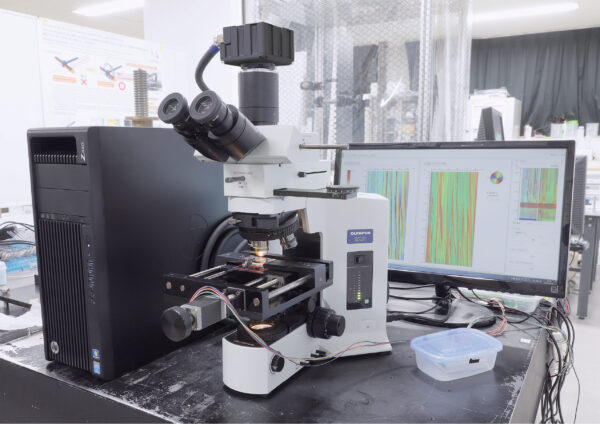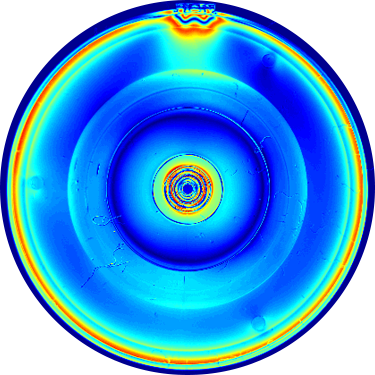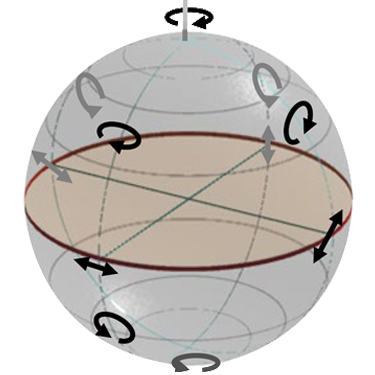Polarization

Polarization
Polarized light cannot be recognized visually but it is light where “light waves oscillate in a single plane”. Since the polarization state of light varies depending on the internal structure of the transmission object and the surface shape of the reflected object, it can be applied to measure various physical qualities and visualize phenomena by obtaining the polarization state before entering and after exiting the object. By combining this “polarization information” with the “conventional“ high-speed camera images, it is possible to study the load applied to a cutting tool at the same time as analyzing the stresses inherent in the transparent material in the images, and understand the stress propagation and relaxation processes in impact tests and flow phenomenon. This enables us to visualize events that cannot be seen by ‘conventional means’, quantitatively measuring the uniformity of the spatial performance of the alignment film in a non-contact manner.
TECHNIQUES
Presentation of PA/WPA Systems

Multilayered Photonics Crystals

About Polarization and Poincare-Sphere

Comparison of High-Speed Polarization Imaging Methods for Biological Tissues
Recent advances in high-speed cameras have created new possibilities to apply polarization state imaging to dynamic loading cases [1,2,3,4,5]. Quantitative approaches for calculating the properties of local principal stresses within materials without fringe unwrapping have also evolved, which are commonly referred to as “dynamic photoelasticity. ”For these approaches, a series of images are collected at different orientations of the optical polarization state generator. The polarization angle of orientation and relative retardation are calculated at each point in the field of view from these multiple polarization state images. Ramesh et al. [6] and Patterson [7] provided excellent reviews of dynamic photoelasticity. For high-speed dynamic events, the challenge is to collect the multiple phase images sufficiently fast.
High-speed imaging of sound using parallel phase-shifting interferometry
Sound-field imaging, the visualization of spatial and temporal distribution of acoustical properties such as sound pressure, is useful for understanding acoustical phenomena. This study investigated the use of parallel phase-shifting interferometry (PPSI) with a high-speed polarization camera for imaging a sound field, particularly high-speed imaging of propagating sound waves. The experimental results showed that the instantaneous sound field, which was generated by ultrasonic transducers driven by a pure tone of 40 kHz, was quantitatively imaged. Hence, PPSI can be used in acoustical applications requiring spatial information of sound pressure.
